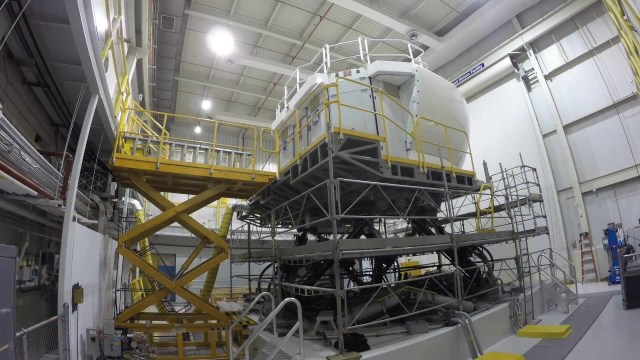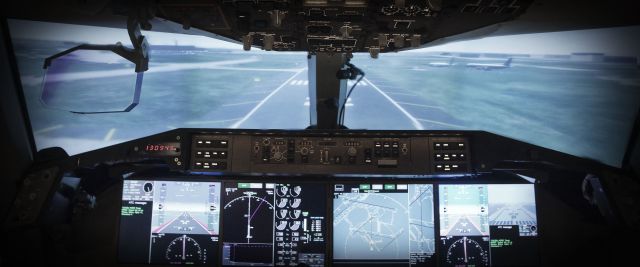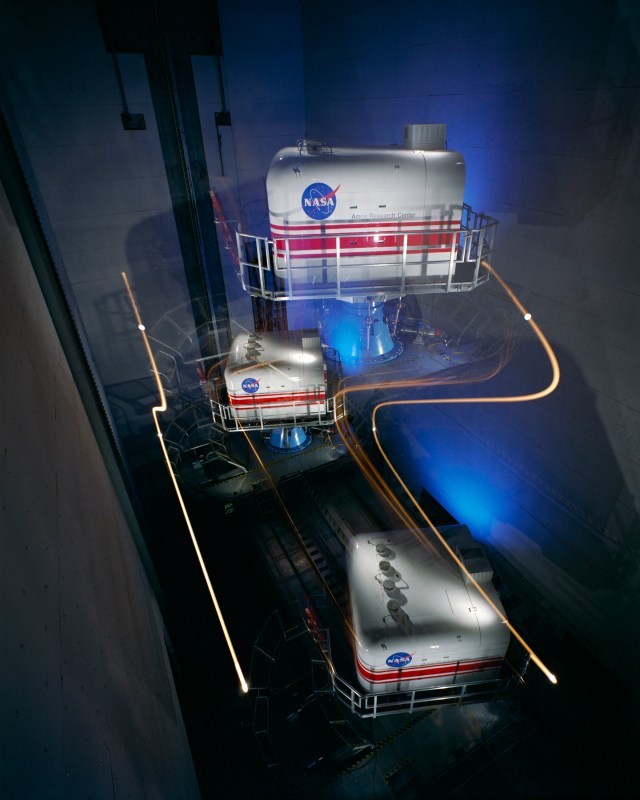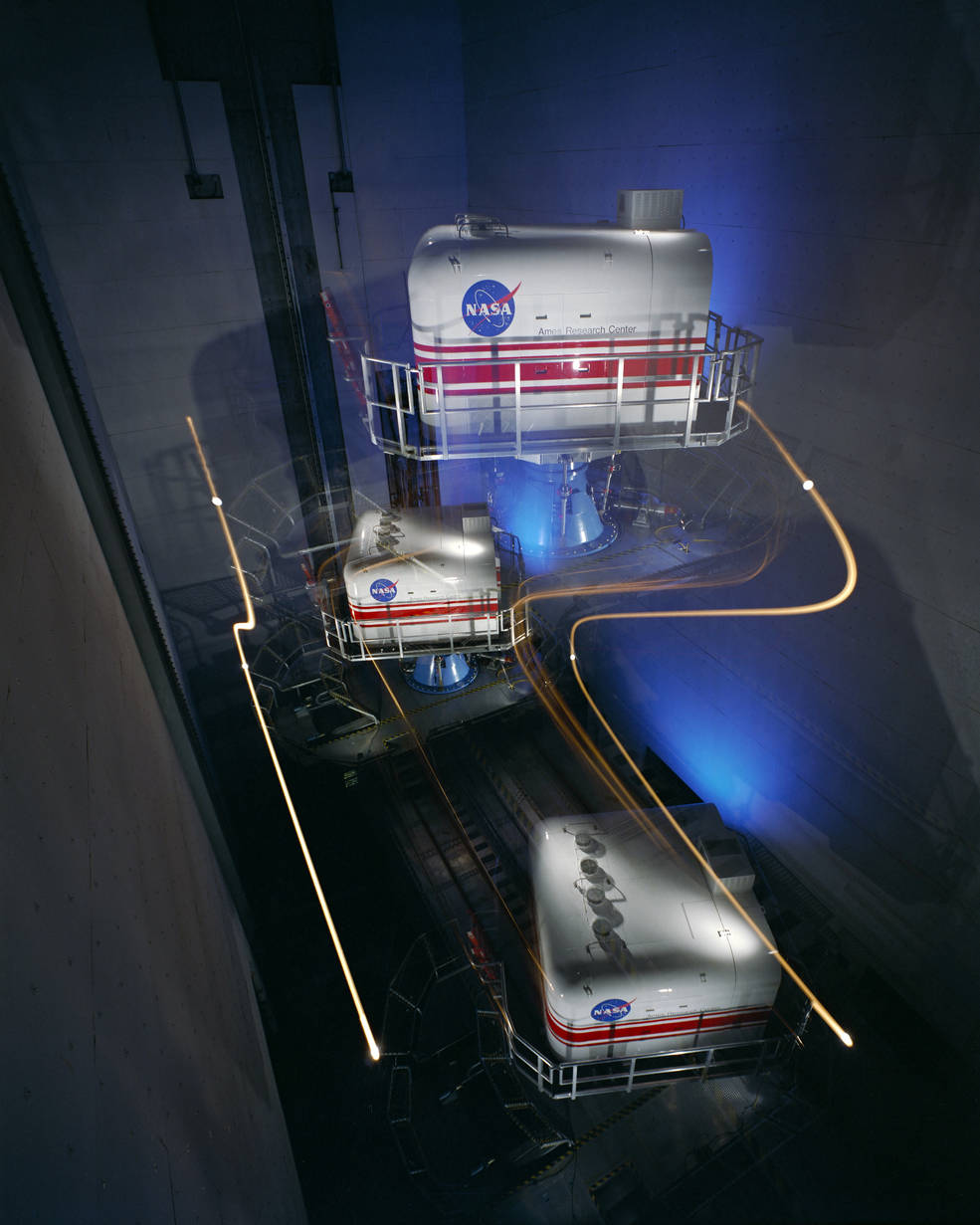


Vertical Motion Simulator

Housed at NASA Ames Research Center, the Vertical Motion Simulator (VMS) complex provides researchers with a suite of sophisticated tools to explore, define and solve issues in both aircraft and spacecraft design. It offers fast and cost-effective solutions using real-time piloted simulations, realistic sensory cues, and extensive motion range.
Engineers can customize the VMS system to simulate any aerospace vehicle, whether existing or envisioned. The VMS replicates an entire flight envelope, including the critical phases of approach and landing. Simulations reproduce flight characteristics of vehicles with a high degree of fidelity. Realistic flight cues are delivered to pilots in real time, such that simulated vehicles respond just as quickly as their real-world counterparts.
Researchers remain in constant communication with pilots, monitor information generated by the simulation, and record data in numerous formats for later analysis. These data contain and convey crucial information about the aircraft or spacecraft under evaluation.
Read more about the Vertical Motion Simulator.
To arrange testing in this facility, please contact Steven Beard or email hq-setmo@mail.nasa.gov.
























